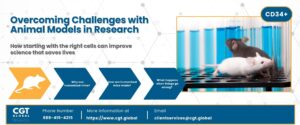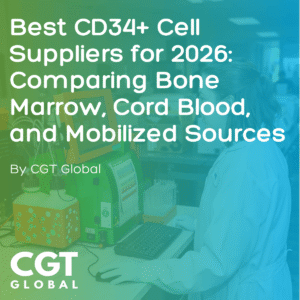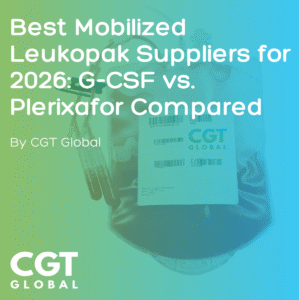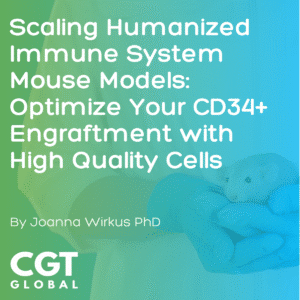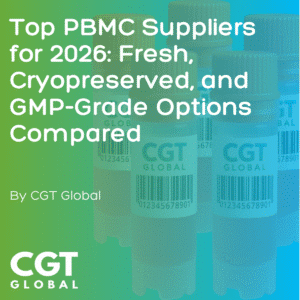Overcoming Challenges with Animal Models in Research –
How Starting With the Right Cells Can Improve Science That Saves Lives
BY JOANNA WIRKUS
One estimate reports that more than 100 million mice are used in biomedical research each year in the U.S. Mus musculus, the most common model organism, has been the foundation of biological science since the early 1900s due to its convenient size, reproductive capability, and ease of care and handling. While mice and humans are ~85% genetically similar, many drugs that cure diseases in mice have failed human clinical trials due to important interspecies differences. One key difference is between mice and human immune systems. A mouse’s immune defenses deal more effectively with ground level pathogens like parasites, spore forming bacteria, and environmental fungi in the soil. Human immune systems, on the other hand, better manage airborne invaders such as viruses in respiratory droplets. The human immune system is more complex than in mice. Keeping these differences in mind is key when translating laboratory science to the clinic.
Advancements to make the immune system of mice more “human” started in the 1980s. Today, xenografting the human immune system into the convenient package of a mouse has reduced the risk of clinical trials and has helped develop better vaccines, cancer immunotherapies, and new medicines.
Why use humanized mice?
Studying the mechanisms that lead to human diseases comes with technical and ethical challenges. Human cells in culture have allowed scientists to monitor the cell’s response to different exogenous compounds and test various hypotheses rather quickly. However, these cells are cultured in a highly artificial environment and thus pose challenges when extrapolating in vitro findings to the complexities of the human body. Clinical trials are constrained by high cost and require the protection of human subjects by minimizing the invasiveness of procedures. Certain experiments aimed at understanding the drivers of disease at the cell level are impractical or impossible to test in humans. Enter model organisms such as laboratory rodents. Rodents allow for in vivo investigations to overcome many diseases. The mouse model experimental approach is not without its limitations. For example, wild-type mice are not good preclinical models for the treatment of many human pathogens and malignancies. Immunocompromised patients are a particularly vulnerable population who benefit from proper vaccination to prevent serious diseases. In preclinical testing of vaccines, a humanized mouse is better at predicting vaccine efficacy against human pathogens.
One important type of humanized mouse model is created by engrafting human hematopoietic stem cells (HSCs) or peripheral blood mononuclear cells (PBMCs). This eliminates a key confounding factor in preclinical immunological research. First discovered in mice over 70 years ago, the Major Histocompatibility Complex (MHC) system in mice and the equivalent Human Leukocyte Antigen (HLA) system in humans have important functional differences. For example, the HLA molecules found in humans can bind to and present a broader range of pathogen-derived peptides. By engrafting HSCs into mice and creating chimera or “humanized mice,” scientists create a more accurate model of the human immune system to study therapeutics for cancer, autoimmune diseases, and infections.
How are humanized mice made?
While there are a number of protocols to create humanized mice, the overall procedure is similar to a stem cell transplant in humans. Immunodeficient mice undergo preconditioning (irradiation or myeloablative chemotherapy) to ensure the optimal conditions for the engraftment of the new immune system. Next, an intravenous injection of human stem cells restarts the immune system. These cells can come from a variety of sources and can include different cell types. For example, cells can be sourced from peripheral blood, umbilical cord blood, or bone marrow. Engrafted cells may be CD34+ hematopoietic stem cells, PBMCs, or isolated NK cells. There are distinct advantages and disadvantages to different sources of cells. Sourcing naïve CD34+ stem cells from cord blood reduces the risk of graft-vs-host disease. Furthermore, cord blood is a rich source of HSC compared to peripheral blood or bone marrow. Cord blood also supports both a more comprehensive reconstitution of the immune system including the lymphoid and myeloid lineages (T cells, B cells, NK cells, dendritic cells, monocytes, and macrophages). PBMCs are easier to harvest but only engraft T cells long term.
Overall, one of the keys to success of a humanized mouse experiment is the number of cells present at the start of the experiment. Inadequate cell infusion may lead to the death of the animal. Also, to reduce batch effects, the entire sample size of mice needed for the experiment must come from the same donor. For this reason, it is crucial that the stated cell count is accurate. Starting material quality and quick processing are also critical factors in achieving successful outcomes.
What Happens When Things Go Wrong?
Animal research abides by strict ethical standards. Creating humanized mice in the laboratory requires high quality starting material for research success. If actual cell counts are lower than stated or a lot of cells from a single source is too small, there is a risk of a failed experiment if there are inadequate numbers of cells to rescue the immune system. This leads to unnecessary harm to the animals and results in a loss of time and money towards the intended research goals. Alternatively, lower cell counts mean that fewer humanized mice can be made, which may not align with the optimal sample size and could lead to an experiment that is underpowered to detect significant differences and rejected in peer review. To minimize these risks, it is important to choose a starting material vendor that consistently provides high quality cell products so your experiments will be a success.
Some researchers may choose to buy blood products and isolate cells in their own laboratory. This strategy requires significantly more effort to accomplish and if something goes wrong with the in-house isolation process, starting materials, mice, time and money are inevitably wasted. Buying isolated cells directly from your vendor de-risks the scientific workflow.
Conclusion
Today, we have the tools, technology, and knowledge necessary to span the mouse-to-human translational gap with human derived stem cells. With this, we can improve the efficiency of developing new life-saving treatments.
If you’re a researcher looking to improve your engraftment rates, learn how CGT Global can help. Within their partner hospitals, CGT Global medical staff collects thousands of cord blood units each year. These units are collected moments after birth and quickly isolated to CD34+’s in CGT Global’s state-of-the-art laboratories within 24 hours, providing scientists around the world with the highest quality of cells.

